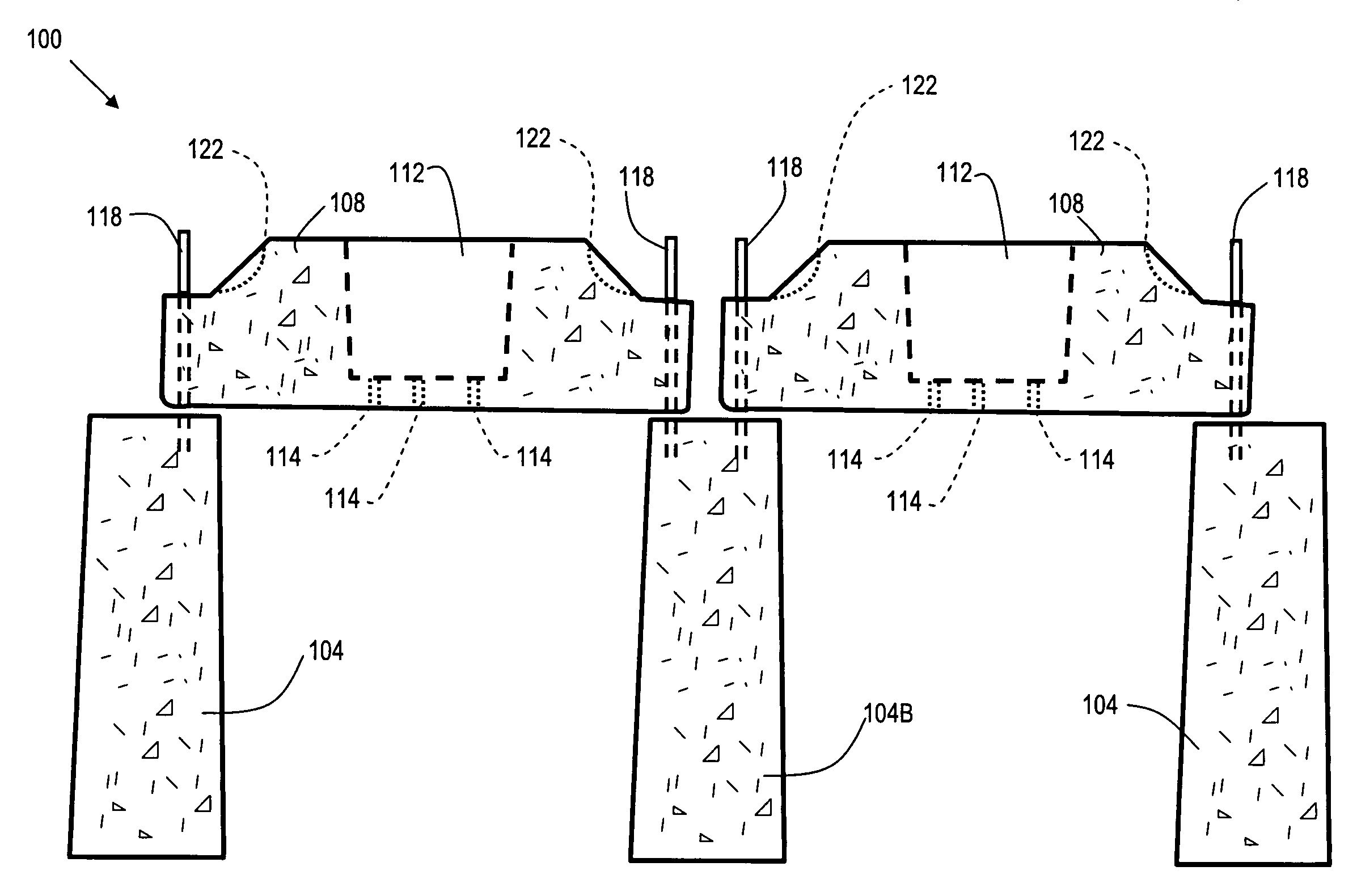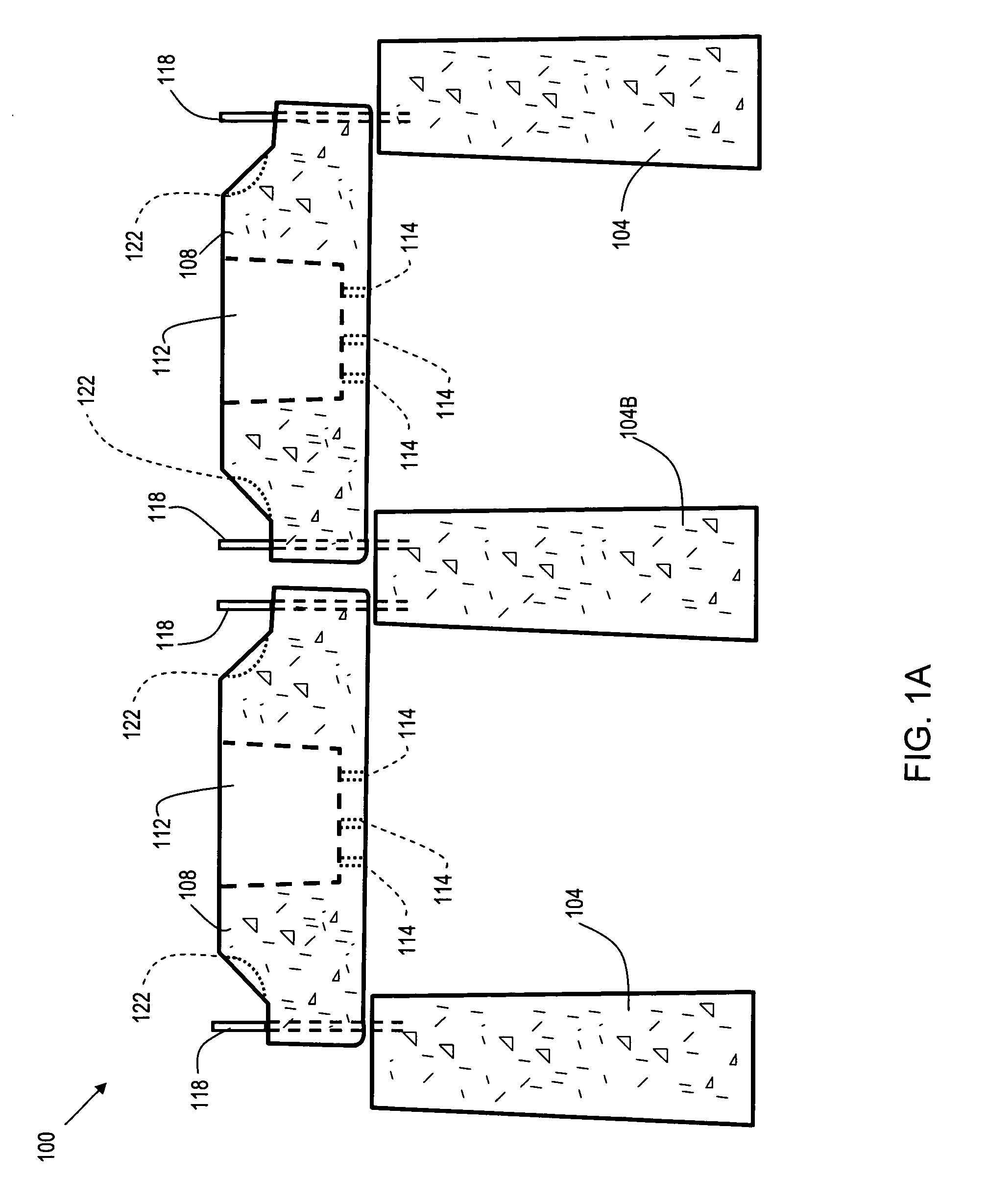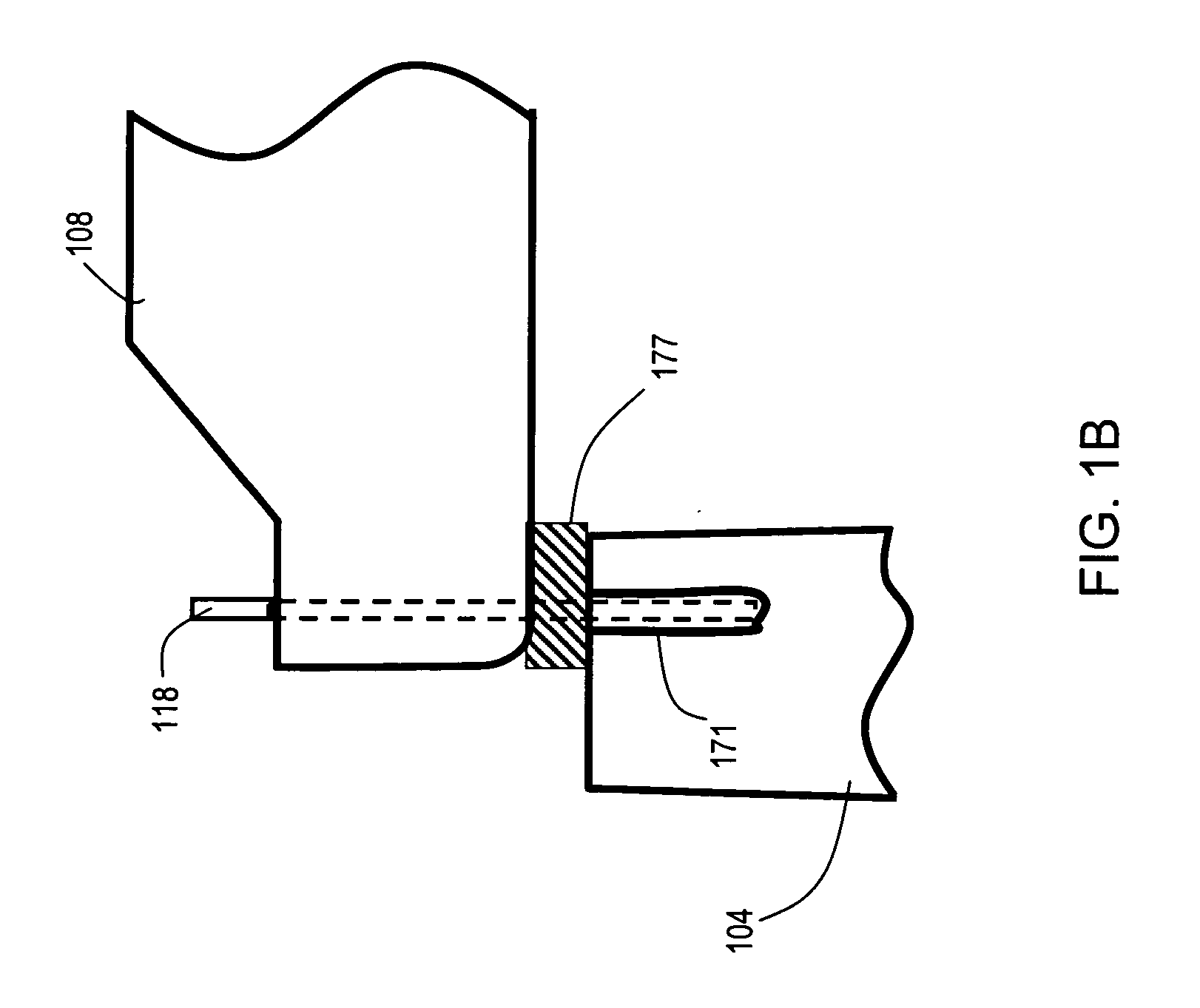Grave marker grid support system
a support system and grave marker technology, applied in the direction of traffic signals, road repairs, roads, etc., can solve the problems of constant maintenance, poor condition of some grave markers, and the possibility of tombstones falling and eventually sinking into the ground, so as to reduce the risk of damage, and be cost-effective
- Summary
- Abstract
- Description
- Claims
- Application Information
AI Technical Summary
Benefits of technology
Problems solved by technology
Method used
Image
Examples
embodiment 100
[0010]Referring now to FIG. 1A (side view) and FIG. 2 (top view), an embodiment 100 of a grave marker support system in accordance with the present invention is shown. Caissons (indicated generally as 104) serve as vertical support members. A plinth 108 is straddled across two caissons 104. The caissons 104 are sufficiently wide at the top thereof to provide support for two plinths, as is the case for caisson 104B. As stated previously, the caissons 104 and plinths 108 may be made of any suitable material with sufficient structural strength, and that will not decompose when buried. Concrete has been shown to be a cost effective building material that meets the aforementioned criteria for use in constructing the caissons 104 and plinths 108. In one embodiment, the caissons 104 are poured on site (at the grave site) into a forming structure (not shown), such as a “sonotube” manufactured by SONOCO PRODUCTS COMPANY of S.C., USA. Alternatively, the caissons 104 may be formed at a facilit...
embodiment 300
[0015]FIG. 3 shows a side view of an embodiment 300 of a grave marker support system in use with a grave marker 340 and casket 344. The base of socket (112 of FIG. 1) of plinth 108 is lined with a geotextile fabric material 332, such as one of the LINQ materials, manufactured by THRACE-LINQ INC, of Summerville S.C., USA. Geotextile fabric material 332 provides good drainage properties, allowing water to flow through it, yet keeps larger particulate matter from clogging drainage ports 114. Above geotextile fabric material 332 is a layer of small sized aggregate 336, such as a combination of one or more of cinder, crushed stone, quarry fines, stone dust, or small pebbles. Aggregate 336 provides a suitable means for fine adjustment of the position of grave marker 340.
[0016]In one embodiment, the type of quarry fines used is so-called “screenings.” Screenings are a uniformly sized, fine, sandy material with some silt particles. Screenings commonly range in particle size from about 3.2 m...
embodiment 400
[0019]FIG. 4 shows a side view of an additional embodiment 400 of a grave marker support system providing enhanced drainage capability. This embodiment is similar to the embodiment of FIG. 3, but having an additional aggregate layer 481 placed just below the plinth 108 to facilitate drainage. In one embodiment, the aggregate layer 481 is comprised of crushed stone, and has a depth that ranges from about 3 inches to about 5 inches.
PUM
 Login to View More
Login to View More Abstract
Description
Claims
Application Information
 Login to View More
Login to View More - R&D
- Intellectual Property
- Life Sciences
- Materials
- Tech Scout
- Unparalleled Data Quality
- Higher Quality Content
- 60% Fewer Hallucinations
Browse by: Latest US Patents, China's latest patents, Technical Efficacy Thesaurus, Application Domain, Technology Topic, Popular Technical Reports.
© 2025 PatSnap. All rights reserved.Legal|Privacy policy|Modern Slavery Act Transparency Statement|Sitemap|About US| Contact US: help@patsnap.com



